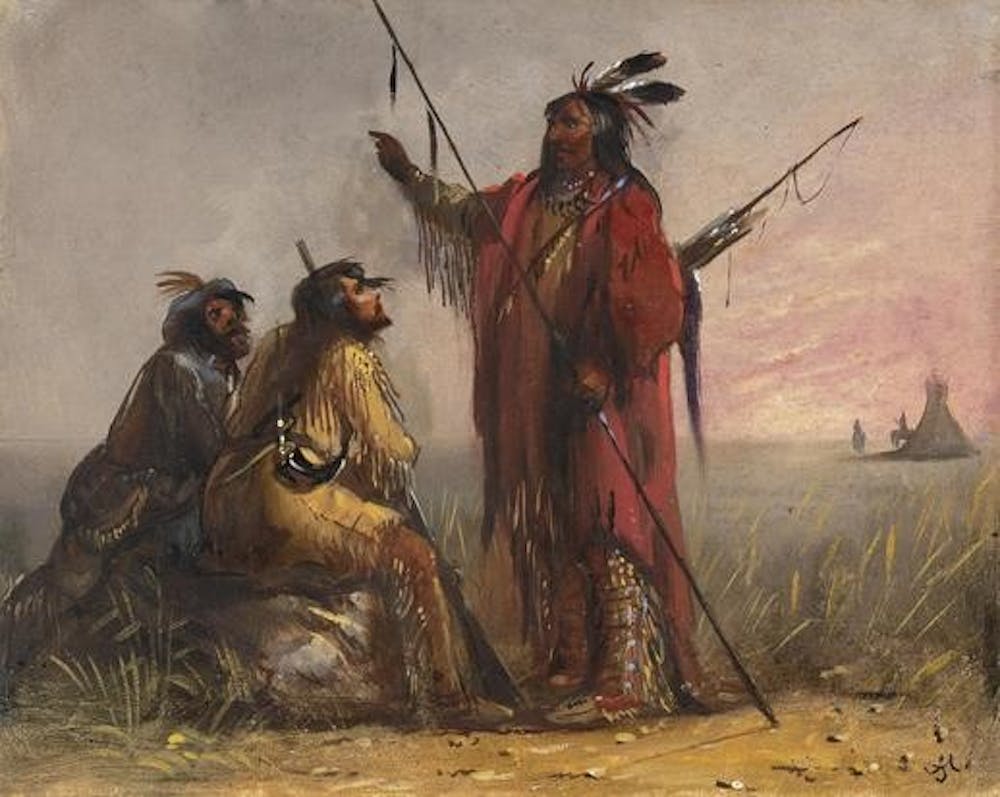A student of Thomas Sully, the famed artist who painted the image of President Andrew Jackson that now adorns the $20 bill, American painter Alfred Jacob Miller was never short of an artistic education.
[media-credit name="COURTESY OF THE PHILADELPHIA MUSEUM OF ART " align="alignright" width="300"][/media-credit]
What the Baltimore native lacked, though, was inspiration and recognition, both of which he gained when Scottish nobleman William Drummond Stewart hired him to record his hunting and fur trading expedition to the Rocky Mountains in 1837. For the rest of his life, Miller used the experiences and sketches from this six–month trip for his paintings.
The works on display — intermediary pieces between field sketches and commissioned paintings — reveal striking American perceptions of the West during the mid to late 1800s. The art embodies Atlantic beliefs that the West was a land of natural harmony and unity with the environment. Noble Native Americans and dauntless trappers populate Miller’s art.
Fittingly, Miller frequently painted scenes of peaceful cross–cultural interaction, as in “Departure of the Caravan at Sunrise” and “Visit to an Indian Camp on the Border of a Lake.” Indeed, the Easterners and Europeans who purchased Miller’s final paintings reveled in these ideals and even reproduced his images — the gallery provides one example in the form of a silver ewer produced by Baltimore smiths Samuel Kirk & Son.
The strongest impression left by Miller is in his use of watercolors. As a medium closely associated with nature, Miller utilizes watercolor to its full evocative effect. The use of wash, gouache and overlapping watercolor further enforce nature as a critical character in all of the scenes Miller depicts. In this respect, Miller displays Romantic sensibilities pre–dating the movement.
The exhibition is a surprise package for visitors and a treat for art enthusiasts. Not only is the art pleasingto the eye, but Miller’s work also provides a journalistic record — “picto–journalism”— of popular perspectives of the West at the time and a true outsider’s experiences in the region. Now, a six–month assignment for a Scottish lord provides us with one of the first outsider looks at America’s interior.







